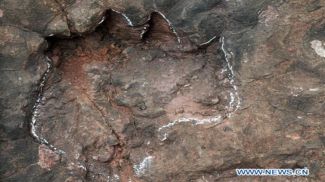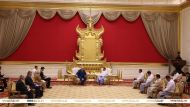PINGYAO, 28 July (BelTA - China Daily). - Home to more than 2,000 incredibly rare and sublimely carved Buddhist painted statues, the fascinating Shuanglin Temple in the ancient town of Pingyao, Shanxi province, made it to UNESCO's World Heritage List in 1997. Behind the coveted glory, however, lies the arduous efforts of curators and preservationists who went beyond their call of duty to protect the over 1,400-year-old edifice from crumbling.
Some six kilometers to the southwest of Pingyao's central area, the temple is a picture of serenity, its quiet grandeur a stark contrast to the hustle and bustle of the town.
Rebuilt largely under the Ming (1368-1644) and the Qing (1644-1911) dynasties, the most mesmerizing section of the temple is its Eastern Art Gallery of Painted Sculptures. While a majority of temples worldwide narrate stories through paintings, the artisans of Shuanglin used 3-meter-tall statues to weave engaging tales that have stood the test of time.
Experts say the statues stand out by the sheer virtue of their "rarely seen large numbers, extensive content and highly artistic expressions". No surprise that these were labeled "major cultural relics" under provincial protection in Shanxi in 1965.
Chen Lin, an inheritor of the Pingyao art of painted sculpting that was named a provincial cultural heritage in 2013, says Shuanglin's walls feature techniques of bas-relief (barely protruding motifs), high relief (halfway protruding motifs) and circular engravings (inside a circle). The themes are generally religious in nature or relate to the daily life against the backdrop of buildings, mountains, clouds, rivers and forests.
Visitors often wonder why the sculptures "lack luster". Chen says it is because they are meant to retain their time-honored appearance.
"The painted statues have not undergone any large-scale repairs over the years. They are in good shape under preservation efforts. We take care of daily maintenance, which is mostly dusting," says Chen.
Bodhisattva Skanda, regarded as a devoted guardian of Buddhist monasteries, is commonly seen in temples across the country, but the one at Shuanglin boasts a stern disposition like no other. The brawn beneath the armor, the broad belt and the flapping rope together lend both grandeur and gravitas.
"You feel as if the guardian is alive and moving, not static," says Chen, extolling the exquisite craftsmanship.
Among other salient features of the shrine is the prominent presence of female sculptures, more than half in number.
"We all tend to associate women with the qualities of kindness and compassion. These sculptures thus bring the masses closer to Buddhism. Also, the liberal space offered to the female form speaks volumes for the progressive outlook of the Pingyao people," Chen explains.
The connection with the common man is equally outstanding. Flanking the door leading to the Thousand Buddha Hall are more than 30 statues fashioned after devoted worshippers. Some of the names can be traced to the family trees of local villagers. "The sculptures have been more than a study in art for generations. The clothes and accessories are a valuable source for modern research on the evolution of attire," says Chen.
While the number of visitors to the temple may be sparse compared to those to the town seat, several ancient architecture research teams and students of art have beaten a path to the temple over the years.
"Many stay here for at least half a month," says Li Qixu, the curator of the Shuanglin Temple Painted Sculpture Art Museum, which was founded in 1987. "Some of them replicate the sculptures on the spot, thus demonstrating the craftsmanship to curious travelers."
The unassuming charm of Shuanglin is the result of continuous and concerted efforts of cultural relic protectors for decades, Li admits. On March 20, 1979, the temple was among the first tourist attractions opened to the public.
When he started working on the temple in 1992, some halls had leaking roofs and there were cracks on the walls. In 1994, the Hall of Heavenly Kings, which was in the worst state, underwent a major revamp.
With recognition from UNESCO, things took a turn for the better in 1997.Funds poured in and continue to do so. To date, 10 halls have undergone restoration work. Wooden frames have been installed to protect the painted sculptures. "These come from our ancestors and cannot be compromised in any way," emphasizes Li.
No damage or theft has been reported at Shuanglin under the watchful eyes of Li and other guardians since 1979. Before modern security measures kicked in, manual patrolling was conducted at regular intervals every day and night. In 1998, an underground water supply system for fire control was put in place and in 2005, a surveillance system installed.
Last year, experts from the Dunhuang Academy were invited to examine the painted sculptures, review temple preservation efforts and advise on future projects. The temple management has applied for digital collection technology that will analyze any possible damage.
In the coming days, visitors may also be able to feast their eyes on frescoes from the Ming Dynasty that cover 400 square meters of the temple, Chen says.













